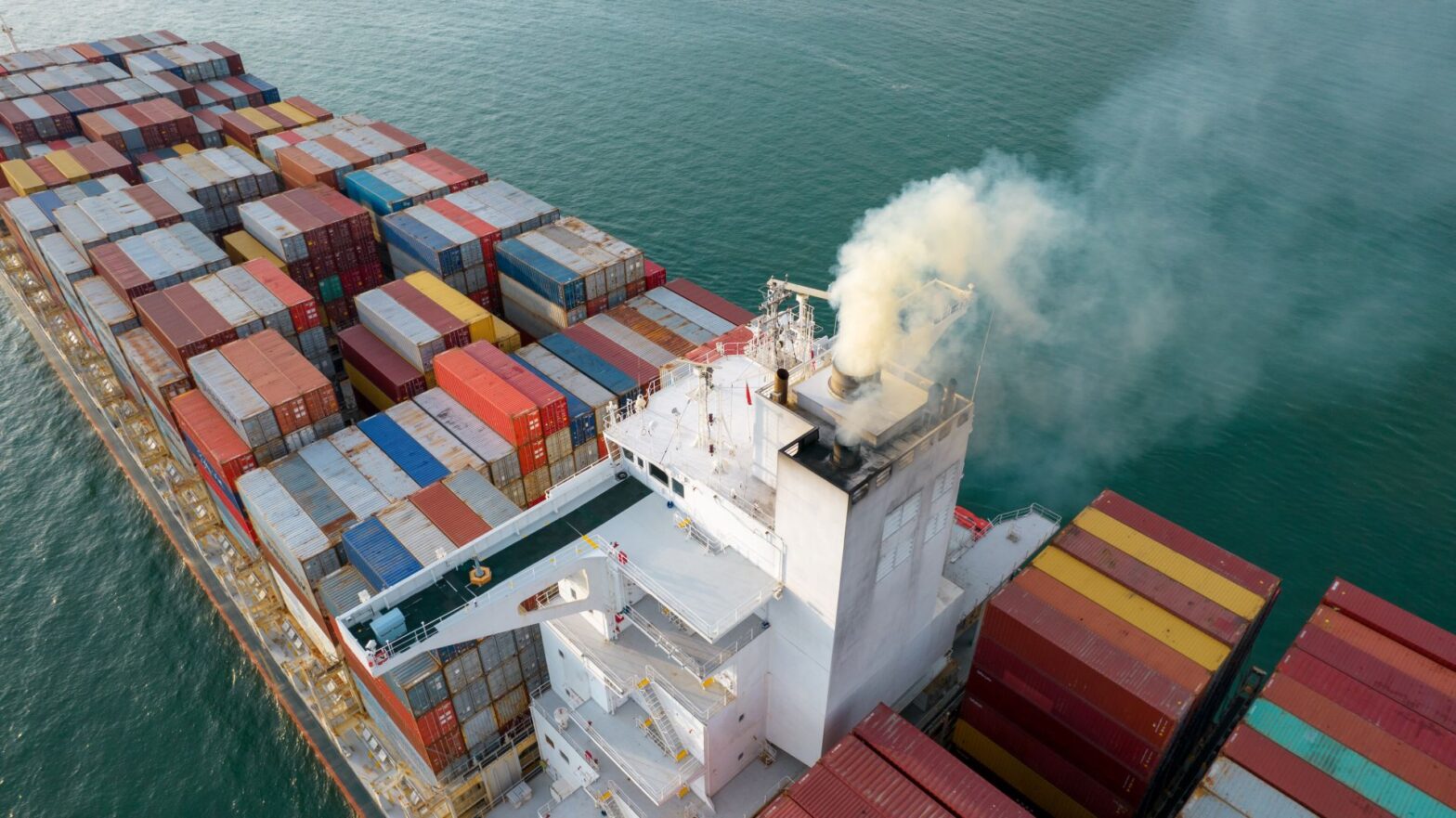OceanCare welcomes inclusion of shipping in the EU Emissions Trading Scheme
The international marine conservation organisation OceanCare welcomes the inclusion of maritime transport in the European Union’s Emissions Trading Scheme (ETS), as reflected in the “Fit for 55” legislative package presented today by the European Commission. The EU thus sets an example to the International Maritime Organization on the need to establish a global market-based mechanism to reduce CO2 emissions in this very polluting sector. However, OceanCare considers it inconsistent and unhelpful from a climate point of view that the European Commission favours the use of liquid natural gas (LNG), a fossil fuel.
The CO2 emissions reported under the EU Monitoring, Reporting and Verification (MRV)[1] system represent around 15% of the total CO2 emissions emitted by global shipping. EU shipping needs to cut down 90 Mt CO2 from now to 2030 to meet its new climate target[2] of reducing 55% GHG emissions below 1990 levels by that date. The decision to include shipping in the ETS will allow the EU to make significant progress in reducing greenhouse gas emissions (GHG) as it will encourage ships to immediately implement energy efficiency measures, such as speed reduction, as well as, in the medium to long term, the use of sustainable zero emission fuels, such as green hydrogen and ammonia from renewable sources.
Almost half of that 90 Mt CO2 reduction needed by 2030 could be achieved by a set of energy efficiency measures. It is widely recognised that reducing the speed of ships is, among the different operational measures available, the one that can contribute in the most cost-effective way to reducing very significantly and with immediate effect CO2 emissions. Slow steaming also has other important environmental benefits because its implementation would also reduce emissions of air pollutants such as SOx, NOx and black carbon, as well as underwater noise and the risk of collision with marine wildlife.
“With today’s proposal the European Commission is also sending a strong and clear message to the International Maritime Organization (IMO) about the necessity to establish a global market-based mechanism to reduce CO2 emissions from shipping. Until today, the IMO has failed to progress the decarbonization of the shipping sector on global scale”, declares Nicolas Entrup, Co-Director of International Relations at OceanCare.
OceanCare welcomes the fact that the EU has decided to take a major step in this direction, thus breaking the deadlock within the IMO, where the constructive proposals to try to achieve significant progress in reducing GHG emissions from shipping submitted by the European Union, the UK, Canada, New Zealand, the Marshall Islands, Tuvalu (and most recently the USA which changed its climate policy with the new administration under Joe Biden) have been constantly blocked by a whole set of countries like Argentina, Chile, Brazil, India, Russia, Japan, China, United Arab Emirates and Saudi-Arabia, among others. Obviously, the latter block has not yet understood that inaction on a significant reduction in GHG emissions will also inevitably have much higher economic costs.
Indeed, the IMO should assume that, if it wants to maintain its global leadership to promote safe, secure, environmentally sound, efficient and sustainable shipping (i.e., its official mission), it should approve the application of a universal GHG levy regime. In so doing, it would send the global market an unequivocal signal that a transition to fully decarbonized shipping, leaving no one behind, complying with the Paris Agreement temperature goals and science, is the only wise way to act. This measure would also provide the highest certainty to the market, to minimize the disruption to industry and trade.
However, the EC’s “Fit for 55” proposal fails miserably when it comes to promoting the use of zero GHG emission fuels for shipping. Indeed, instead of laying the foundations to ensure the necessary large-scale deployment of green hydrogen and ammonia in the coming decades, the EC proposal for the revision of the Alternative Fuels Infrastructure Directive (AFID) -now converted into a Regulation-, includes a mandate that a core network of refuelling points for liquefied natural gas (LNG) at maritime ports should be available by 2025, including LNG terminals, tanks, mobile containers, bunker vessels and barges.
“We are irritated by this move from the EC, as the promotion of the use of natural gas is short-sighted and a serious mistake within climate action policies”, added OceanCare shipping expert, Carlos Bravo. “Natural gas is a fossil fuel with a huge carbon footprint, both in terms of the CO2 emissions produced in its combustion and the significant emissions of methane (a greenhouse gas tens of times more potent than CO2) at all stages of its life cycle”.
On the other hand, OceanCare welcomes the EC’s proposal that Member States shall take the necessary measures to ensure that a minimum shoreside electricity (SSE) supply for seagoing container and passenger ships is provided in all Trans-European Transport Network (TEN-T) maritime ports. Container ships and passenger ships, being the ship categories which according to 2018 MRV data are producing the highest amount of emissions per ship at berth, should as a priority be provided with shore-side electricity supply.
Nevertheless, OceanCare believes that this measure should be brought forward to 2025 and not delayed until 1 January 2030, as stated in the Commission’s proposal. SSE is a technology that has been mature for more than 20 years but very few ports have implemented it as it has not been sufficiently promoted by the EU and Member States until now.
[1] The EU MRV Regulation provides requirements for the monitoring, reporting and verification of carbon dioxide (CO2) emissions from ships arriving at, within or departing from EU ports and/or European Economic Area ports.
[2] With the 2030 Climate Target Plan, the Commission proposes to raise the EU’s ambition on reducing greenhouse gas emissions to at least 55% below 1990 levels by 2030.
